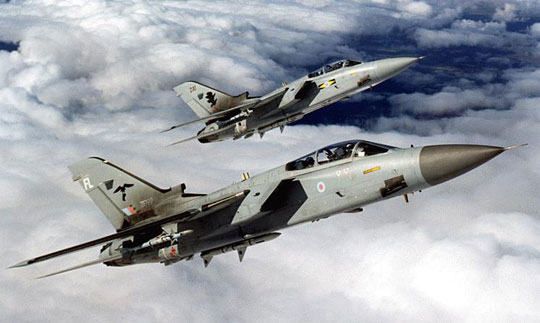Combat pilots have different brains than ordinary people?
A new study published by University College London (UCL) shows that the ability to perform tasks under the pressure of fighter pilots may depend on how their brain is organized.

Fighter pilots have more precise responses than ordinary people.
Royal Air Force fighter pilots are trained to fly at supersonic speeds at low altitudes, requiring them to have good control with little negligence. This principle is considered to reach the limit of human cognitive activity. That motivates scientists at UCL to conduct research on their brain function.
Finally, the team found differences in white matter and hemispheric connections to the brains of fighter pilots compared to healthy volunteers who were not pilots.
According to the BBC news agency, scientists at UCL have looked at how 11 pilots piloting the British Air Force's Tornado fighters act in two standard visual perception tests to evaluate the their thinking power. Their test results are compared with those of the same age and gender, but have no experience in flying. Participants were also given MRI scans to see their brain structure.
The two intuitive tests measure how quickly and accurately a person is when dealing with a goal while distracted. The team found that the pilots responded more accurately than the average person in the first experiment, but there was no difference in the second experiment . That means their brain activity is highly dependent on specific tests.
Professor Masud Husain of UCL stated that his research team was impressed with the ability of the fighter pilot pilots to make accurate, quick choices. According to him, the ability to perform some of the pilots' more precise tasks involves differences in the right hemisphere's connection system.
The test results reveal that optimal cognitive control is accompanied by structural changes in the brain, not just the larger of the areas involved in the brain but also the differences in connection between key areas.
Mr. Husain added: " An interesting question is that, pilots were born like that or the ability to acquire through training? The idea is that they were endowed with the ability. That's when I was born . "
Husain's team hopes to continue learning about other professional labor groups, such as sports stars, to see if there are more differences in brain structure.
"What makes them different. Are there imprints in the brain that we can observe with scanners? " Husain stressed.
- How does the brains of geniuses work? (2)
- UFO encounters of US naval pilots
- Smart 'other development' human brain
- People who live do not need ... brains
- Russia launches a combat robot model like real people
- Why do pilots never use a meal like a passenger?
- Miraculous escape phases of talented Russian pilots
- People born without brains still live healthy, IQ is higher than ordinary people
- Reveal how to transform ordinary people into superman
- Smart people often do not have a wide relationship and this is the reason
- Why young people easier to learn?
- People with big brains will be smarter, remember longer?
 'Fine laughs' - Scary and painful torture in ancient times
'Fine laughs' - Scary and painful torture in ancient times The sequence of numbers 142857 of the Egyptian pyramids is known as the strangest number in the world - Why?
The sequence of numbers 142857 of the Egyptian pyramids is known as the strangest number in the world - Why? History of the iron
History of the iron What is alum?
What is alum?